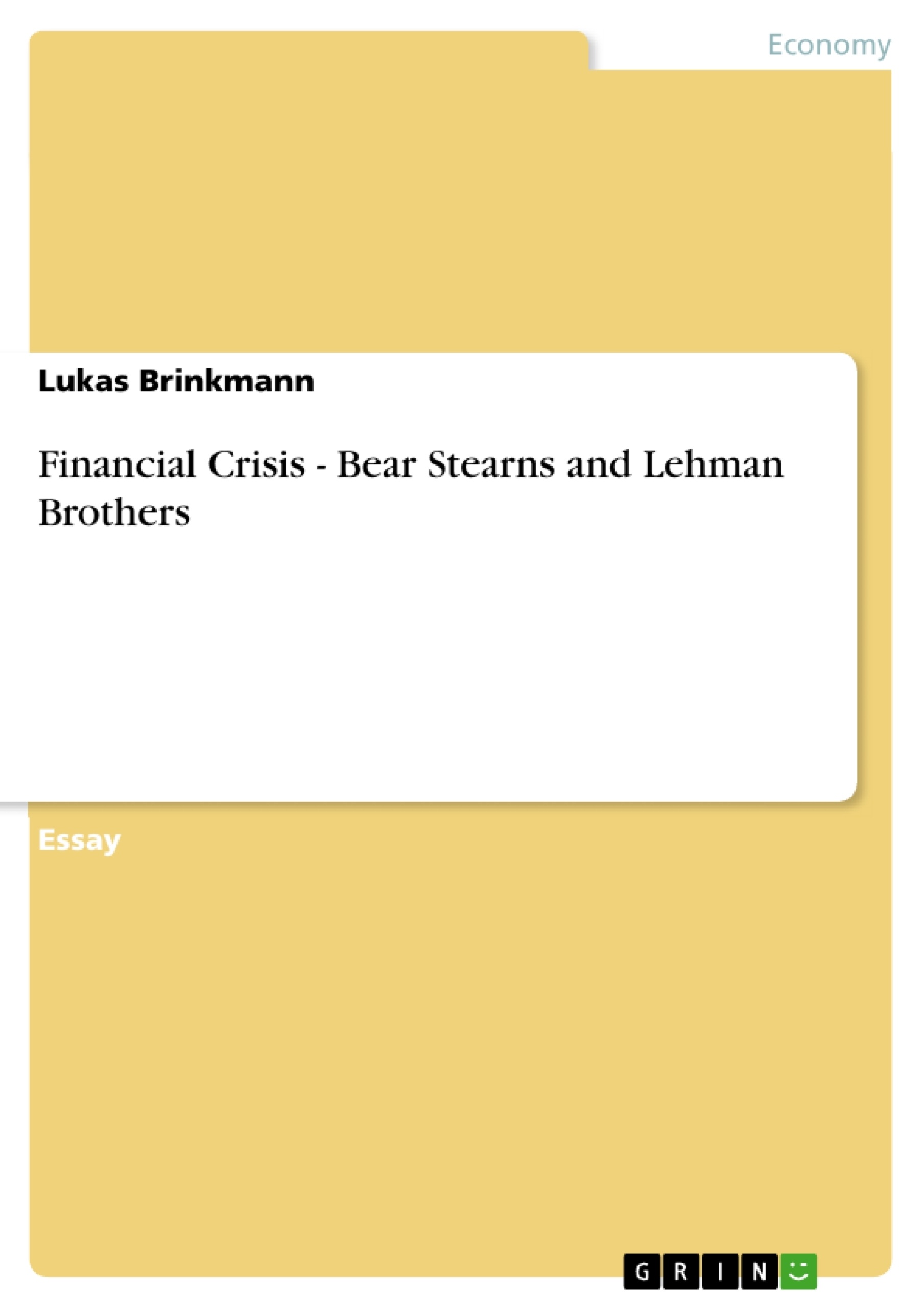Introduction
The collapse of the housing market (bursting of the housing bubble) and its crucial impact saw the end of the five largest US investment banks. Goldman Sachs and Morgan Stanley switched under constraints to commercial banks. Merrill Lynch was acquired by Bank of America. Bear Stearns was taken over by JP Morgan Chase. Lehman Brothers crashed completely due to the same mistakes of too high leverage and an overreliance on unrealistic real estate assets. Because of the disastrous outcomes of this bankruptcy there was a lot of discussion about the decision of the Fed to let Lehman fall.
In this paper I will start to explain the failures of Bear and Lehman, then I will analyze these states of affairs and finally I will present my recommendations for the future.
Inhaltsverzeichnis (Table of Contents)
- Introduction
- The collapse of Bear Stearns and Lehman Brothers
- Analysis
- Conclusion
Zielsetzung und Themenschwerpunkte (Objectives and Key Themes)
This paper analyzes the collapse of Bear Stearns and Lehman Brothers, two prominent investment banks that faced significant challenges during the subprime mortgage crisis. The paper aims to explain the causes of their failures, analyze the consequences of their collapse, and offer recommendations for preventing similar occurrences in the future.
- The role of subprime mortgages in the collapse of Bear Stearns and Lehman Brothers
- The impact of excessive leverage and risk-taking on the financial stability of investment banks
- The implications of government intervention in the financial crisis
- The need for improved financial regulation and risk management
- The importance of a sustainable and long-term approach to financial management.
Zusammenfassung der Kapitel (Chapter Summaries)
- Introduction: This section provides an overview of the subprime mortgage crisis and its impact on the US investment banking industry. It highlights the downfall of Bear Stearns and Lehman Brothers, emphasizing their reliance on risky assets and excessive leverage.
- The collapse of Bear Stearns and Lehman Brothers: This chapter details the events that led to the collapse of Bear Stearns, including its struggles with mortgage-backed securities, declining liquidity, and the subsequent acquisition by JP Morgan Chase. It also describes the parallel challenges faced by Lehman Brothers, including mounting losses, plummeting stock prices, and the unsuccessful attempts to secure a buyer.
- Analysis: This chapter explores the factors contributing to the failures of Bear Stearns and Lehman Brothers, including the role of greed, the Taxpayer Relief Act of 1997, and the shortcomings of the existing rating system. It examines the debate surrounding government intervention and the implications of bailing out financial institutions.
Schlüsselwörter (Keywords)
The main keywords and focus topics of this text are: subprime mortgage crisis, investment banks, Bear Stearns, Lehman Brothers, financial regulation, risk management, leverage, government intervention, moral hazard, systemic risk, rating agencies, sustainable finance.
- Quote paper
- Bachelor of Arts Lukas Brinkmann (Author), 2009, Financial Crisis - Bear Stearns and Lehman Brothers, Munich, GRIN Verlag, https://www.grin.com/document/168112




